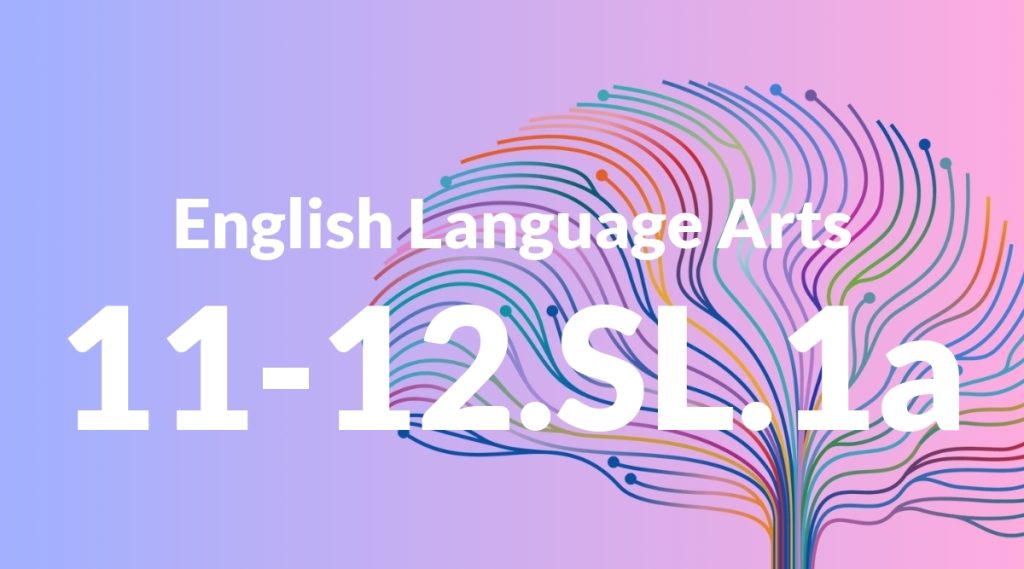Standard: 11-12.SL.1a – Come to discussions prepared, having read and researched material under study; explicitly draw on that preparation by referring to evidence from texts and other research on the topic or issue to stimulate a thoughtful, well-reasoned exchange of ideas.
Grade level: Grade 11-12
Subject: English Language Arts
Domain: Speaking & Listening
Teacher Overview
This standard emphasizes the importance of preparation and evidence-based discussion in English Language Arts. It is crucial for students to come to discussions well-prepared by having read and researched the material. This preparation enables them to contribute thoughtfully and constructively, drawing on evidence to support their points. This skill is vital for academic success and real-world applications, such as in college and professional settings. Students should possess the ability to read and understand complex texts, extract key ideas and evidence, and conduct basic research.
After mastering this standard, students will be able to engage in sophisticated discussions, presenting well-reasoned arguments supported by evidence. This will prepare them for higher-level academic work and professional communication.
Common Misconception 1
A common misconception is that merely reading the material is enough for discussions. This is incorrect because effective participation requires a deeper engagement with the text, including note-taking and identifying key pieces of evidence to support one’s points.
Intervention 1
Implement structured note-taking strategies, such as Cornell Notes, and require students to bring their notes to discussions to ensure they are prepared with evidence.
Common Misconception 2
Another misconception is that personal opinions hold the same weight as evidence-based arguments. This is incorrect because academic discussions prioritize evidence and research to support claims, rather than personal beliefs.
Intervention 2
Teach students how to distinguish between opinions and evidence-based arguments by providing examples and practicing the evaluation of different types of statements.
Prerequisite Knowledge
Students should be able to read and comprehend complex texts, identify key ideas and evidence, and understand basic research methods.
Subsequent Knowledge
Students will develop advanced critical thinking skills, the ability to engage in professional and academic discourse, and the capability to construct well-supported arguments.
Instructional Activities
- Host a class debate on a relevant topic, requiring students to prepare by researching and bringing evidence to support their arguments.
- Organize group projects where students must collaboratively research and present their findings.
- Conduct peer review sessions where students critique each other’s work based on evidence and research.
- Facilitate seminar-style discussions on literature or current events, emphasizing the use of evidence in contributions.
- Simulate a mock trial or role-playing activity where students must prepare and present evidence-based arguments.




